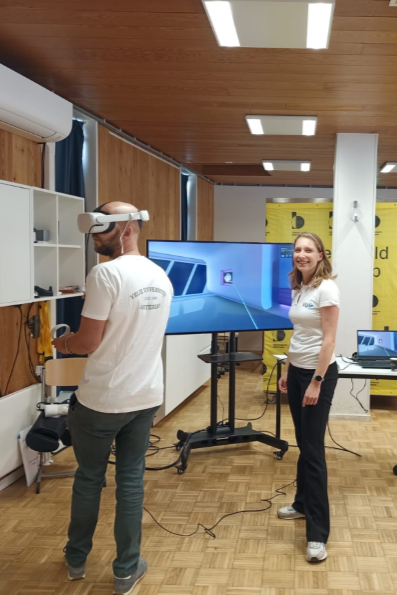With a focus on active blended learning, this article provides an in-depth look at the implementation of VR technology in the educational landscape.
Innovative Learning Tools
Tess, an enthusiastic junior lecturer in Human Movement Sciences, passionately shares her excitement and knowledge about the application of Virtual Reality (VR) in education. After completing a master's in Human Movement Sciences, where she researched VR in police training under stressful conditions, and gaining experience in using VR in healthcare education, she brings her expertise to VU Amsterdam.
Following her studies and teacher training, the opportunity arose to participate in the Virtual Reality Learning Lab. Here, Tess explored the possibilities VR offered in education. The goal was clear: to bridge the gap between traditional education and innovative learning tools to convey course material in an engaging way to students.
Implementation in Education
Focusing on first-year students in Human Movement Sciences at VU for the subjects of movement analysis and anatomy, Tess incorporates VR headsets into her teaching. During these lessons, students can gain in-depth and interactive knowledge of anatomical concepts and conduct movement analyses. They explore structures, interact with three-dimensional models, and visualize complex concepts, leading to deep student engagement and providing a hands-on approach to understanding the human body.
“The interplay between traditional education and innovative methods opens the door to a blended and interactive learning experience. While classroom learning remains essential, VR offers an additional perspective of self-directed and practical learning. Best of both worlds, where both educational approaches complement each other for a richer learning environment.”
Students have online access to theoretical knowledge and exercises. They then apply this theoretical knowledge in workshops, with teachers guiding them through the procedural steps.


